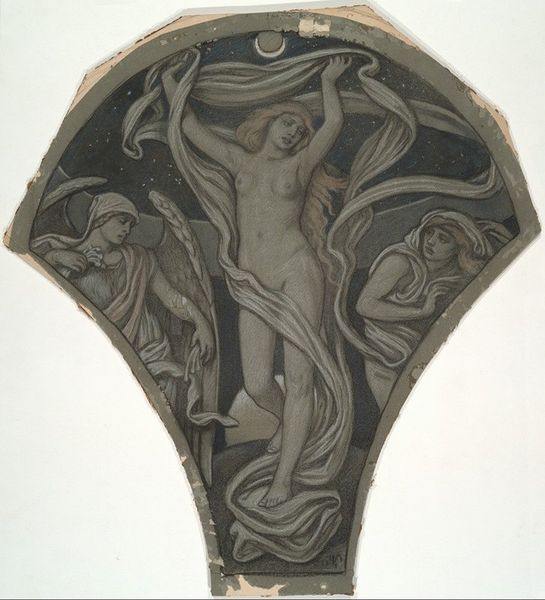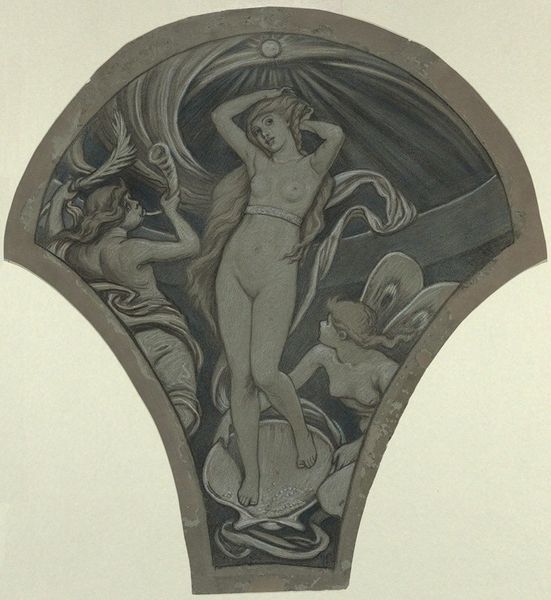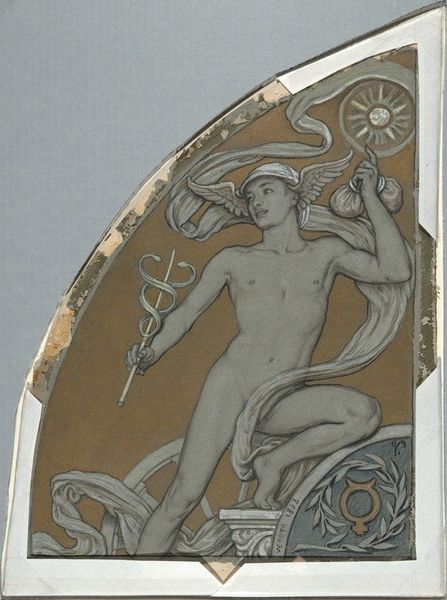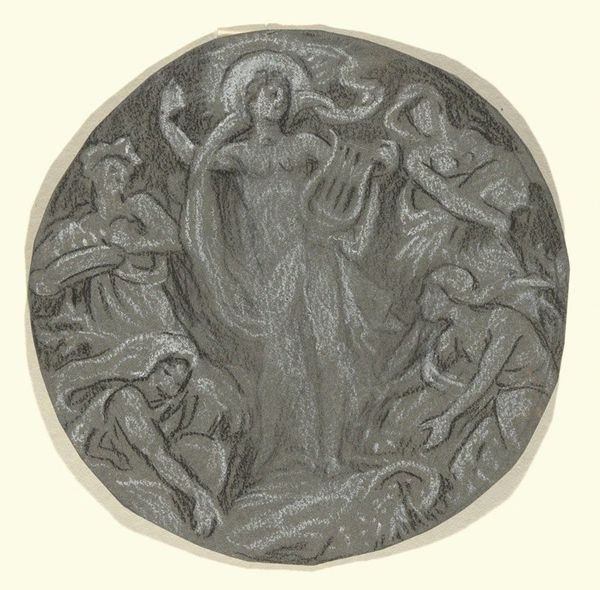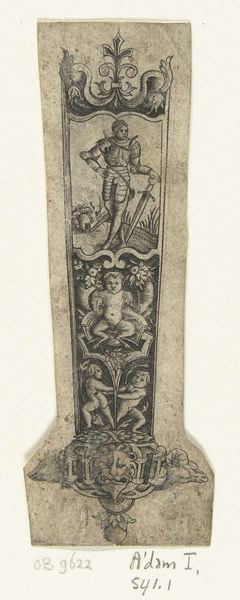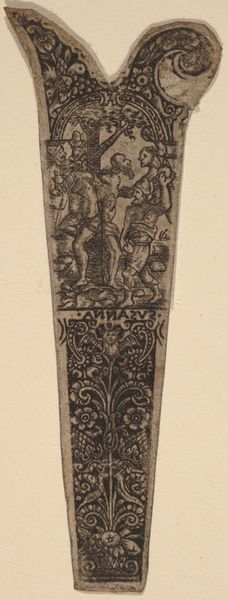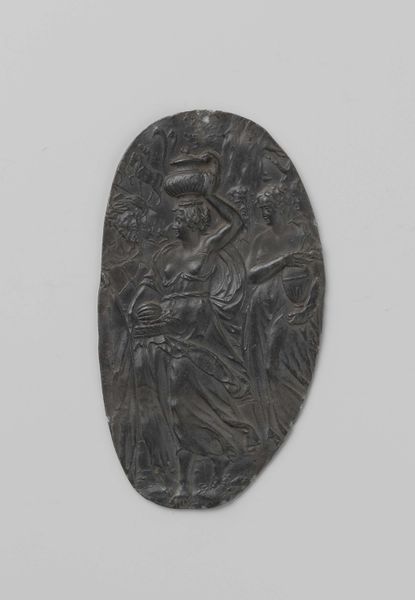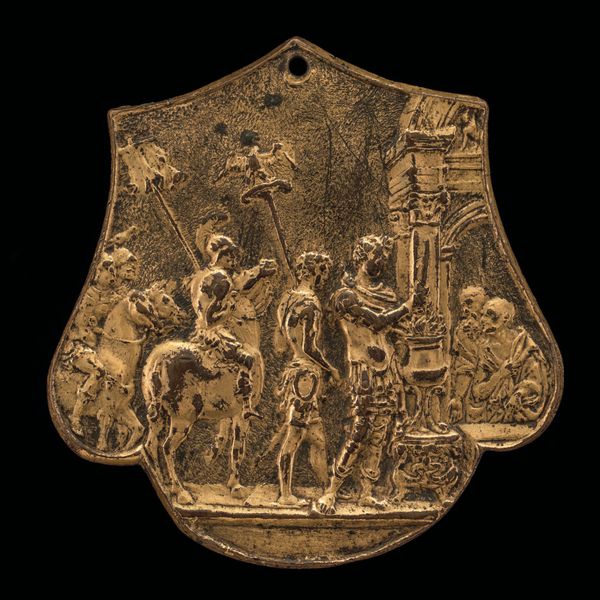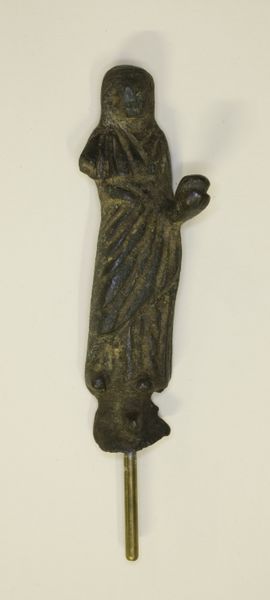
drawing
#
portrait
#
drawing
#
figuration
#
symbolism
#
academic-art
#
nude
Copyright: Public Domain: Artvee
Curator: Looking at "Study for Venus," we see Elihu Vedder working in pencil, sketching a scene reminiscent of classical mythology. There is something of a fan-shape composition in blues and grays depicting what appears to be Venus emerging from the sea. Editor: My initial thought is of longing. The muted color palette gives it this ethereal, almost melancholic feel. And that fan-like shape really accentuates the figure rising upwards, searching. Curator: Yes, the Venus figure at the center feels almost trapped in a classical allegory, as if she is emerging, reborn perhaps, but still bound by these stylistic expectations of purity. Her expression seems rather serene for such a momentous event, right? Almost resigned to her role. Editor: Precisely. While Venus embodies notions of beauty, pleasure, and maybe love, the cultural memory associated with this symbolic imagery can feel oppressive when considering representations of women within the western art tradition. This piece is part of a longer history of the female form depicted for the gaze and pleasure of another, losing its own power and agency. I wonder what Vedder was hoping to capture with that loaded gesture. Curator: We cannot ignore the persistent cultural interpretations of Venus, from Botticelli onwards! Seeing these symbolic echoes, it suggests the enduring influence of Renaissance ideals, but also a negotiation with those ideals—Vedder lived in a period when women started claiming more social independence. She emerges from a large shell, from a womb. So, what does it mean? Is she newly born? Free to be? Editor: I agree. But I also consider whether she ever truly has control over the cultural interpretations of the artwork, or is simply part of its evolution and complex negotiation with contemporary societal norms. Even now, these classical depictions, while visually powerful, carry within them so much gendered historical baggage that it needs to be unpicked, and that begins by giving the object our close attention and using art historical narratives. Curator: It's a visual echo chamber where interpretations will inevitably clash. We get drawn into an artwork only to be made aware of what still persists in the way women are portrayed. This drawing invites reflection on cultural memory itself and our evolving perceptions of these archetypal figures. Editor: A space where these iconographies continue to exist, clash, merge, reform, and where perhaps we must continue to reimagine. Thank you.
Comments
No comments
Be the first to comment and join the conversation on the ultimate creative platform.
